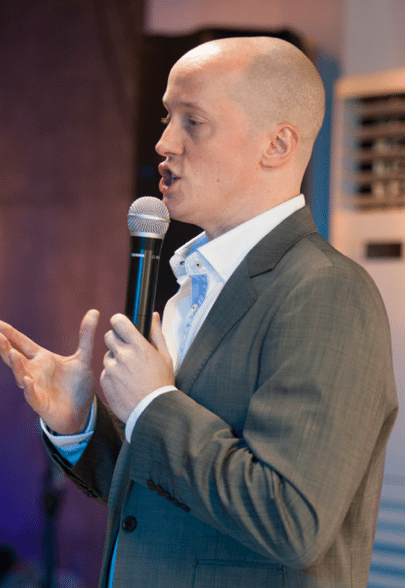Have you ever seen a good Western movie showdown?
Two gunslingers…….
Squaring off in the main street at high noon.
The camera pans out,
It focuses on their eyes.
They watch each other like hawks.
You can almost cut the hostility with a knife!
Then at some unspoken signal they draw…
And that eye contact is only broken when one man is down on the ground……dead.
Chances are eye contact will never be a life-or-death situation for you, but knowing when and when not to use strong eye contact can seriously impact your potential for success in life.
Today’s article is about eye contact and specifically how much you should use to have the most persuasive power when interacting with others.
What The Research Says On Eye Contact & Persuasion
Investigating this issue, I came across research which challenged the conventional wisdom that we should look others in the eye at all times when we are trying to persuade them.
It turn out – there is a balance!

The research is based off a 2013 study at the University of British Columbia.
The most interesting conclusion from this study was that in some situations eye contact has significant persuasive power, BUT that in other situations too much eye contact can be detrimental.
The basic synopsis was: Yes, eye contact has an effect on how persuasive we are, for good or bad.
The primary difference the study found was in the length of the interaction between the person using eye contact and the recipient or recipients.

Eye Contact & Short Requests
For short requests or simple communication the study found that eye contact was indeed more persuasive.
So if you want to ask something simple or small, look the person in the eye and make your request:
“Please go get this for me.”
“Would you mind doing this for me?”
By maintaining eye contact in this situation you will have more persuasive power.
Eye Contact & Longer Discussions
If you’re a politician giving a longer speech or you’re making a presentation at your work that’s about 30 minutes or more this conventional wisdom doesn’t apply.
The research concluded that in this situation, if you’re continuously looking someone in the eyes more than what is considered normal, they can view this as you being aggressive and will have a tendency to resist both you and what you’re saying.

How the Eye Contact Study Was Conducted
The researchers had students look at the eyes of the speaker for a prolonged period. They then also had students look at the mouth of the speaker for a similar prolonged period.
The students that were looking at the presenters eyes felt he was being aggressive because he was looking at them more than an average amount of time.
The average time was found to be about 30-60% of the duration of the presentation. There were some variables like if it was a one-on-one conversation it was acceptable to have longer periods of eye contact and with groups it was found to be even less than the average.
The study also showed that the average time was longer when the presenter was only listening and less when the subject was speaking to the students.
Another variable that seemed to play a role was how well the presenter knew the students. When the presenter was well-known there seemed to be a lower chance of the students recognizing him as being aggressive.
Ultimately the research found that if the students felt the speaker was being overly aggressive they naturally wanted to resist both the speaker and the message he was presenting.

Practical Applications of Eye Contact In Business & Life
So of course now you’re asking yourself how this applies to you and how you can use this knowledge to your own advantage.
You simply have to understand if making small requests you should maintain eye contact.
If you’re talking for a long time or don’t know the person you’re talking to very well, you should reduce the amount of eye contact you maintain.
In a longer discussion especially when speaking to groups it is best to look around and occasionally look at someone, but offset your eye-contact with a smile to make it seem less aggressive.
The most important thing to understand is that you don’t want to focus on single people and stare them right in eyes.
You will only be making them feel uncomfortable and they will feel you’re being aggressive and resist both you and your message.
As always I trust you found this article useful. It’s important that we learned that the conventional wisdom to always make more eye contact is better turns out not to be true
I’m hoping this information will help you with your communication and perhaps this will explain why you’ve been having trouble communicating with strangers or large groups.
Whatever the case make sure you act on your new-found knowledge and if you find it useful be sure to let me know.
Source: http://www.realmenrealstyle.com/effective-eye-contact-persuasion/







